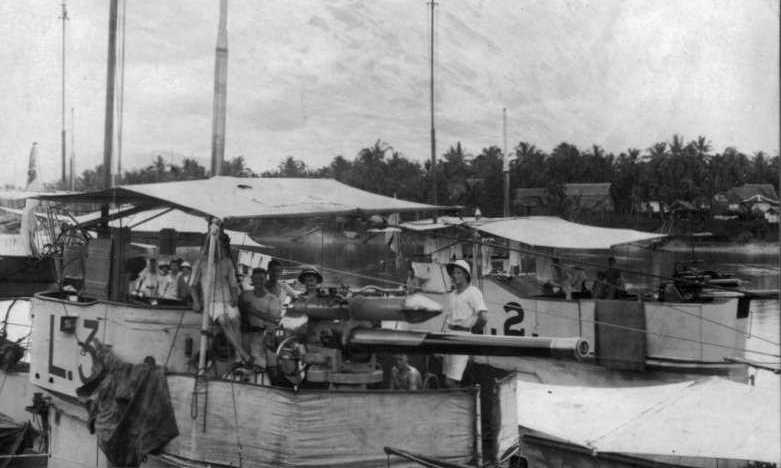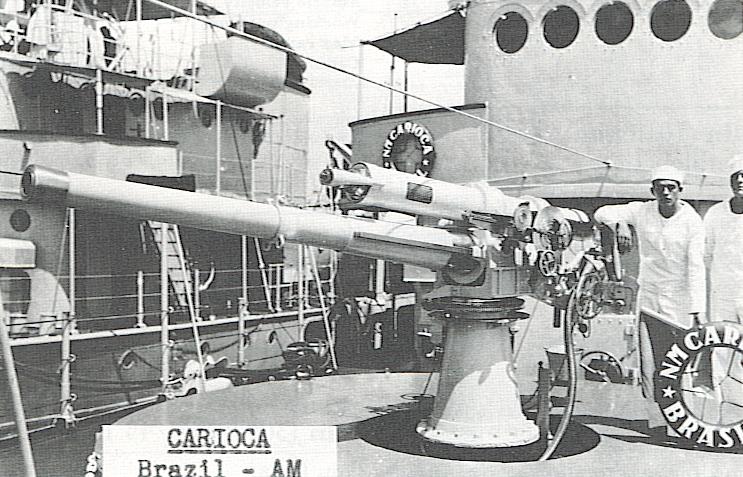This page is a collection of experimental and miscellaneous British 4" (10.2 cm) QF guns, none of which were of much importance. As detailed information for these guns is limited, rather than creating a page for each one, I have decided to combine them into a single page.

This was a Coventry Ordnance Works (COW) design of 40.45 calibers used on four Greek destroyers being built in Britain. The destroyers were taken over at the start of World War I and accepted into service as the "Medea" class. These ships were later rearmed and their guns then given to the submarines J5, J6, J7, L1, L3, L6, L10 and L12. With a 31 lbs. (14.1 kg) projectile and 5.44 lbs. (2.5 kg) charge of MD16 the muzzle velocity was about 2,250 fps (686 mps). A total of sixteen guns were built and the mountings were PXIII with a maximum of 20 degrees elevation.
The Mark VIII designation was given to three guns built by Bethlehem Steel (USA). These had a screw-type breech mechanism and were used as coast defense guns at Scapa Flow during World War I. Little detailed information is available, but they fired fixed ammunition and were probably similar in design to the standard USN 4"/50 (10.2 cm) guns. With a 31 lbs. (14.1 kg) projectile and a 10.5 lbs. (4.8 kg) charge of MD16 the muzzle velocity was about 2,920 fps (890 mps). The mountings were also built by Bethlehem and allowed +20 degrees elevation.
Four guns built by COW for Greece but taken over at the start of World War I. Actual bore length was 49.5 calibers. Generally similar to the 4" (10.2 cm) Mark V but the jacket was not full length and semi-automatic gear was not used. Fired fixed ammunition. These mountings were later modified to allow +60 degree elevation and turned over for anti-aircraft work. They were returned to the Navy in 1918 to be used on submarines, with one possibly being used on E48. With a 31 lbs. (14.1 kg) projectile and 7.88 lbs. (3.8 kg) charge of MD16 the muzzle velocity was about 2,700 fps (823 mps).
This was an experimental AA gun ordered in 1928 to meet a 1926 requirement for a gun with a muzzle velocity of 3,200 fps (975 mps). However, this could not be met with cord propellant and the muzzle velocity was actually about 2,970 fps (905 mps). Barrel life was short and there was excessive oval wear. The mounting was designated as Mark XVI but was never used on a ship.
This designation was given to 150 guns ordered from the USA in 1918 that were intended for DAMS, but the order was cancelled at the end of the War. The design would have been similar to the Mark VIII, listed above, but made from nickel steel and able to handle projectiles with heavier driving bands. They would have used an Asbury breech mechanism and the screw block was to be eccentric as a precaution against the striker operating prematurely.
This was a Vickers Mark M* design used to arm the submarines P614 and P615 which were originally being built for the Turkish Navy but taken over at the start of World War II. Construction was generally similar to the Mark XII* and consisted of A tube, jacket and breech ring with a semi-automatic horizontal sliding block mechanism. With a 31 lbs. (14.1 kg) projectile and a charge of 6.56 lbs. (2.98 kg) NF/S 164-048 they achieved a muzzle velocity of 2,219 fps (676 mps) and a range of 13,970 yards (12,775 m) at 30 degrees.
Data from:
- "Naval Weapons of World War Two" and "British Naval Guns 1880-1945 No 18" article in "Warship Volume X" both by John Campbell
- "Warships of World War II" by H.T. Lenton and J.J. Colledge

